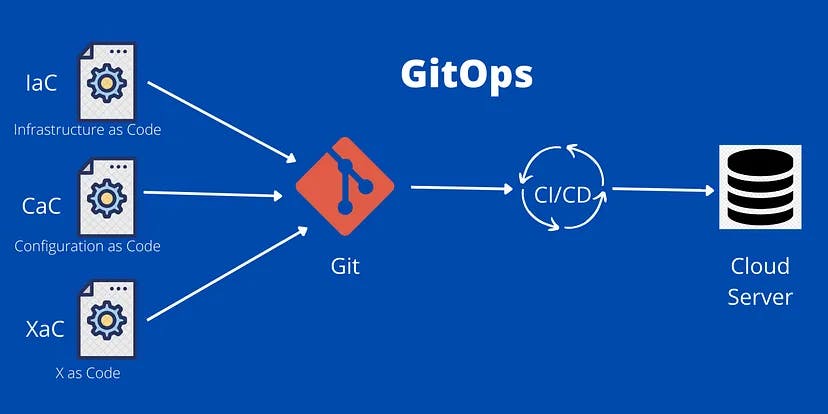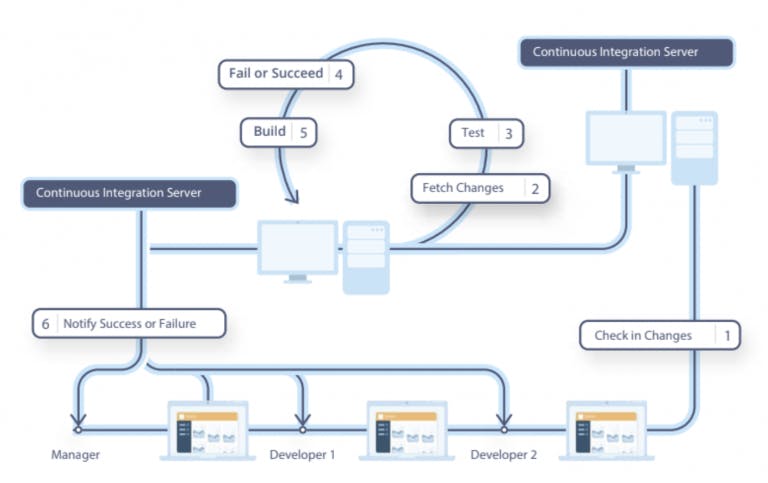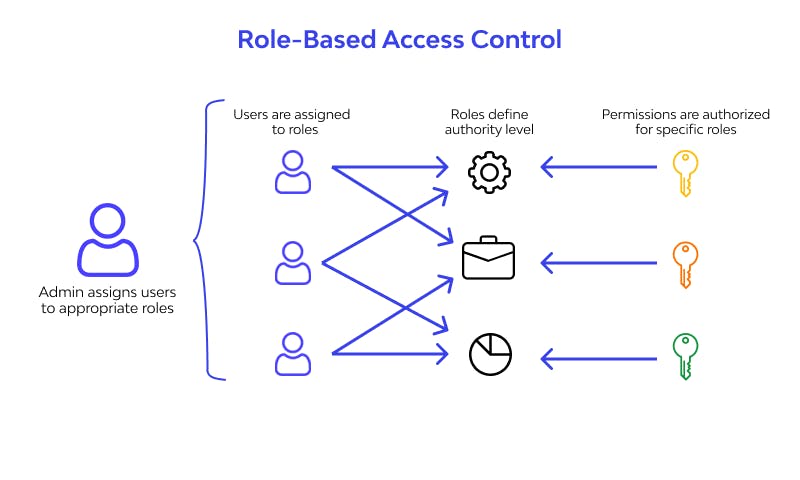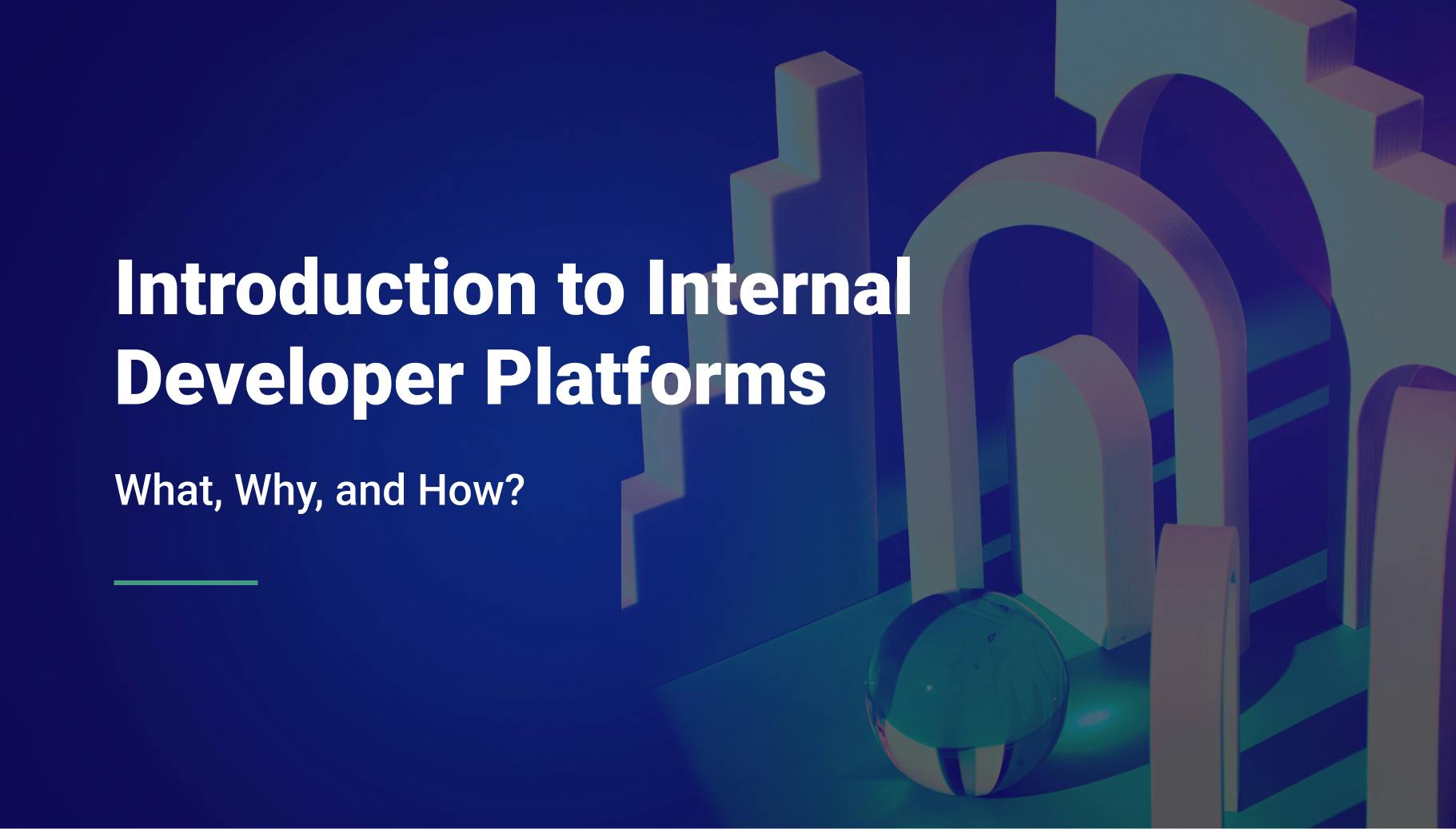6 Essential Components of an Internal Developer Platform
Imagine a scenario where your developers spend less time waiting for resources and approvals, and more time focusing on the core aspects of building exceptional software. This vision becomes reality with the implementation of an internal developer platform (IDP), a revolutionary tool that acts as a catalyst for innovation within your organization.
IDPs centralize key resources and automate workflows, empowering developers with self-service capabilities and promoting a more collaborative and efficient development environment. This empowers them to move faster, innovate more, and ultimately deliver superior software solutions. Let's explore six core elements that support successful IDPs and allow you to unlock the full potential of your development teams and drive your organization to the forefront of innovation.

Morgan Perry
December 2, 2023 · 9 min read
#1. Developers Experience
#Enhancing developer experience with self-service access
Self-service access within Internal Developer Platforms (IDPs) is a game-changer for developer experience. Let’s see how:
- Autonomy and efficiency: Self-service access in IDPs is just like giving developers the 'keys' to their own creative kingdom. Here, they can independently access, provision, and manage resources. This autonomy reduces dependency on IT or operations teams, promoting a more dynamic and efficient workflow.
- Seamless DevOps integration: This feature is tightly integrated with DevOps practices. Tools like Kubernetes for container orchestration and AWS for cloud services are integrated, offering a harmonious and intuitive platform. Developers find themselves in a more streamlined environment, enhancing their productivity and creativity.
Take the example of a Kubernetes-based environment. Developers here can deploy containers, manage resources, and monitor app performance autonomously, adhering to established security and compliance protocols. This not only speeds up development cycles but also enhances their experience, making it more rewarding and efficient.
#The power of enablement
By empowering developers with self-service access, IDPs bring forth numerous benefits such as:
- Empowerment and autonomy: Developers gain direct control over resources, promoting a sense of ownership and reducing dependencies on other teams.
- Accelerated development: This empowerment translates into faster development cycles, as developers can iterate rapidly without operational delays.
- Enhanced collaboration: Besides promoting autonomy, this approach results in better coordination between development and operations teams, leading to agile and responsive development cycles.
#Cultivating a productive culture
Self-service access in IDPs isn't just about functionality; it's about cultivating a culture of productivity among developers. This approach:
- Reduces inter-departmental dependencies: Developers can make quicker decisions and execute tasks without waiting for approvals, leading to streamlined development processes.
- Promotes Innovation: With more control and less red tape, developers are encouraged to experiment and innovate.
- Balances freedom with oversight: Despite increased autonomy, IDPs maintain monitoring and security mechanisms, ensuring system integrity and adherence to industry standards.
Imagine a developer swiftly adjusting resources to manage a sudden spike in traffic. This level of autonomy ensures optimal performance without bureaucratic delays, exemplifying the improved developer experience facilitated by self-service access in IDPs.
#2. GitOps for Infrastructure Automation
#What is GitOps and its role in automating infrastructure provisioning and management?
- Definition of GitOps: GitOps is a paradigm or a set of practices that leverages Git repositories as the source of truth for defining and controlling the state of infrastructure and software deployment. It combines software development (Dev) practices like version control and code review with operational (Ops) practices like deployment and monitoring.
- Role in infrastructure automation: GitOps automates and simplifies the process of infrastructure provisioning and management. It allows teams to use the same tools they use for code development for their infrastructure management. For instance, changes to infrastructure are made through code commits and pull requests, enhancing collaboration and oversight.

#How GitOps enables consistent and reproducible infrastructure deployments
- Consistency: By treating infrastructure as code, GitOps ensures that deployments are consistent across different environments. Since the entire infrastructure is version-controlled, it reduces "it works on my machine" problems, providing a reliable and stable operational framework.
- Reproducibility: GitOps facilitates reproducible infrastructure by allowing teams to revert to previous versions of the infrastructure setup easily. This is particularly useful in disaster recovery scenarios, where you can quickly restore a known good state.
#Advantages of GitOps for maintaining infrastructure configurations
- Streamlined change management: GitOps streamlines changes to infrastructure configurations. For example, updating a Kubernetes cluster configuration involves simply merging a pull request, which then automatically triggers the deployment process.
- Enhanced security and compliance: Using Git's built-in audit trails and role-based access control, GitOps enhances security and compliance. Teams can easily track who made what changes and when ensuring adherence to security policies and regulatory standards.
- Improved team collaboration and autonomy: GitOps empowers development and operations teams to work more collaboratively. Developers can make infrastructure changes, subject to review and approval processes, bringing a sense of ownership and autonomy.
#3. Schema Management and Governance
#The essence of schema management in the Internal Developer Platform
- Schema management: A Foundation of IDPs: Schema management acts as the foundational element at the core of any robust IDP. It's similar to a blueprint, guiding developers and operations teams (DevOps) in handling the complex data structures that fortify modern software applications.
- Why It Matters: In the world of Kubernetes and AWS-based platforms, schema management is pivotal. It offers a structured framework, enabling teams to develop, build, and deploy applications with greater precision and efficiency.
#Enforcing consistent data structures
- Defining data structures: Schema management tools in IDPs define data structure within databases or services. This definition includes types, relationships, and validations, ensuring the data adheres to a specified format.
- Consistency across environments: Whether in development, staging, or production environments, schema management ensures consistency. This uniformity is crucial, especially when dealing with complex deployments involving multiple teams and infrastructure components.
#Maintaining data integrity and preventing errors
- Data integrity at its core: Schema management is indispensable for maintaining data integrity. It ensures that the data entering the system is valid, reliable, and conforms to the predefined schemas.
- Preventing data errors: In an IDP, schema management acts as a safeguard against data errors. Enforcing consistent data structures significantly reduces the risk of data corruption and inconsistencies.
#Practical example: Fintech platform deployment
Consider deploying a fintech platform using a Kubernetes-based Internal Developer Platform (IDP). This platform consists of various financial services, such as transaction processing, account management, and risk assessment, each with its unique data model.
- Schema management application: In this scenario, schema management tools define the data structure for each service's database. For instance, the transaction processing service might have a schema outlining transaction IDs, amounts, user details, and timestamps.
- Enhancing reliability and efficiency: Utilizing schema management ensures updates and new features comply with the established data structures, preventing deployment errors like data type mismatches or missing fields, which are critical in the fintech sector.
- Operational advantages: With clearly defined schemas, the operations team can efficiently manage deployments and maintain the system's integrity. Prompt identification and resolution of schema-related issues are crucial for the platform’s security and dependability in the sensitive fintech environment.
#4. Automated Testing and CI/CD
#Significance of automated testing and CI/CD pipelines in the Internal Developer Platform
- Automated testing: It ensures that every new code integration is thoroughly tested, reducing the risk of bugs and maintaining high standards in software quality.
- CI/CD pipelines: They facilitate a smooth, automated flow from code development to production, significantly speeding up release cycles and enhancing the overall efficiency of the software delivery process.
- Integration with developer tools: The effectiveness of automated testing and CI/CD pipelines is amplified by their seamless integration with a range of developer tools. Examples include code repositories, container orchestration platforms like Kubernetes, and other development tools. These integrations ensure a cohesive and streamlined development environment, enabling teams to work more effectively and collaboratively.
#Ensuring code quality and consistency through automated testing
- Consistent code quality: Automated testing verifies that all new code meets predefined standards, thus ensuring consistency across the development lifecycle.
- A practical use case: Consider a DevOps team using automated tests in their CI/CD pipeline. Each time a developer commits code, the automated tests run, checking for bugs, coding standard violations, or security issues. This approach significantly reduces the chances of errors reaching production environments.
#Streamlining software development and delivery with CI/CD pipelines
- Efficient processes: CI/CD pipelines automate the stages of software development, from initial code build to deployment, thus speeding up the entire process.
- Reduced manual intervention: By automating repetitive tasks, CI/CD pipelines minimize the need for manual oversight, allowing teams to focus on more strategic tasks.
- Enhanced collaboration: These pipelines facilitate better collaboration between development, operations, and quality assurance teams, leading to more efficient development cycles.
One example is Gitlab platform, which provides a comprehensive CI/CD solution that integrates with various tools and services, streamlining the software deployment process and making it more efficient and error-free.

#5. Comprehensive Monitoring and Observability
#Importance of comprehensive monitoring and observability
- Vital for performance management: Monitoring in IDPs acts as a continuous health check, providing real-time insights into system performance. It's like having a health monitoring system for a patient, tracking vital signs to ensure everything functions correctly.
- Proactive maintenance: Similar to preventive healthcare, comprehensive monitoring enables teams to identify and address potential issues before they become critical, ensuring smooth operations.
#Insights into infrastructure and application performance
- Performance metrics: Monitoring tools in IDPs are like diagnostic tools in healthcare, providing essential statistics (resource usage, response times, error rates) that offer a clear picture of an application's health.
- Real-Time Analysis: Equipped with real-time data, teams can make critical decisions swiftly, improving the agility of development and operations, much like how doctors make quick decisions based on real-time patient data.
#Role of observability in issue resolution
- Detecting hidden issues: Observability in IDPs works like advanced medical imaging, revealing underlying problems in complex systems that are not immediately apparent.
- Efficient problem-solving: Providing a comprehensive view of the system, observability enables teams to quickly pinpoint and resolve issues, similar to how a medical team diagnoses and treats a patient efficiently.
Let’s apply the above discussion to an example of a healthcare application used by hospitals for patient management. The application begins to experience sporadic delays in retrieving patient records. Implementing comprehensive monitoring and observability, the IT team discovers that a specific database query is inefficient, causing the bottleneck. They optimize the query, resulting in faster access to patient information, improved care delivery, and an enhanced experience for both healthcare professionals and patients, much like a successful medical intervention improving a patient's health.

#6. Role-based access control (RBAC) for security
#Introduction to RBAC in the Internal Developer Platform
- Concept and importance: Role-Based Access Control (RBAC) is a critical component in Internal Developer Platforms (IDPs). It's a security protocol that assigns system access based on individual roles within an organization. RBAC's significance lies in its ability to provide precise control over the IT environment, ensuring that users have access only to the resources necessary for their roles.
- Relevance to DevOps and Kubernetes: In the realm of DevOps and Kubernetes, RBAC plays a pivotal role. It helps in managing permissions for various deployment tasks and ensures secure orchestration of software components.

#Functioning of RBAC
- Granular access control: RBAC enforces access control by assigning permissions based on roles, such as developer, QA, or administrator. Each role has specific access rights to certain parts of the IDP, like code repositories, build tools, or deployment environments.
- Practical use case: Consider a software development team using AWS for their project. The team lead can assign different access levels using RBAC - developers might have access to the code and build tools, while the deployment team has access to orchestration and monitoring tools. This segregation ensures security and efficiency.
#Role of RBAC in data protection and unauthorized access prevention
- Security of sensitive data: RBAC is instrumental in protecting sensitive data within an organization. Restricting access based on roles minimizes the risk of data breaches and unauthorized data manipulation.
- Preventing unauthorized access: It helps in avoiding unauthorized system access. For instance, a developer without the necessary permissions cannot deploy code to production, thus preventing potential system vulnerabilities or misconfigurations.
- Compliance with regulations: RBAC aids in compliance with security regulations and standards, often requiring stringent control over who can access and modify sensitive information within an IT infrastructure.
#Conclusion
By adopting the six essential components outlined in this article, organizations can unlock the immense potential of internal developer platforms (IDPs). With self-service access, automated workflows, data governance, robust testing, comprehensive monitoring, and granular security, IDPs empower developers to work faster, collaborate more effectively, and deliver exceptional software solutions.
Organizations can significantly enhance developer productivity, streamline software development processes, and accelerate innovation by implementing an Internal Developer Platform (IDP). Take the first step towards revolutionizing your development landscape and unleash the creativity of your teams by exploring further resources and considering an IDP implementation.
Your Favorite DevOps Automation Platform
Qovery is a DevOps Automation Platform Helping 200+ Organizations To Ship Faster and Eliminate DevOps Hiring Needs
Try it out now!

Your Favorite DevOps Automation Platform
Qovery is a DevOps Automation Platform Helping 200+ Organizations To Ship Faster and Eliminate DevOps Hiring Needs
Try it out now!


